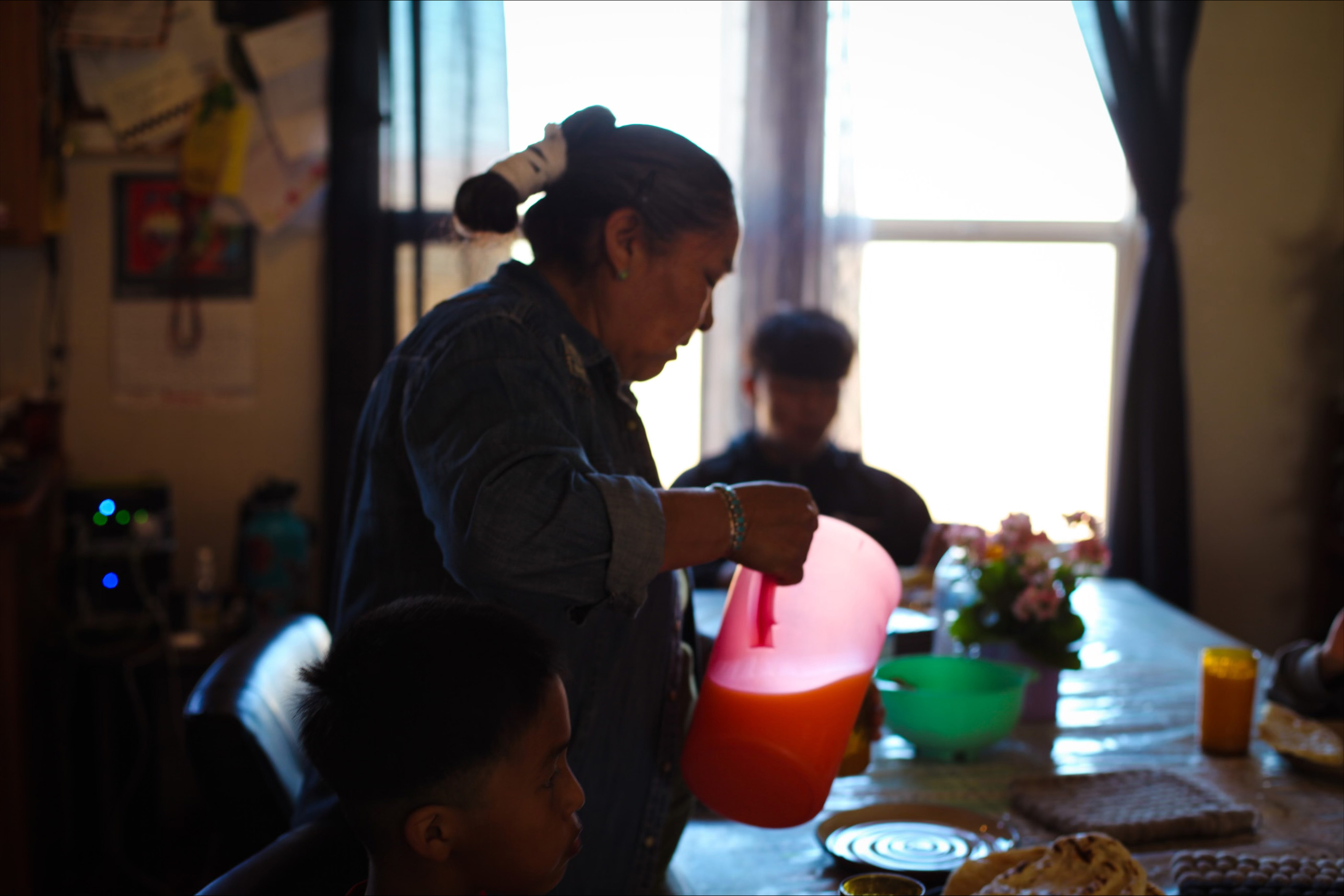Navajo families’ miles-long journey for water highlights access disparities
Nearly a third of Navajo households do not have running water, officials say.
For the past 20 years, Henry Wilson has been forced to travel several miles, multiple times a day, to get water for his family in Monument Valley, Utah.
By the time the sun rises above the red sandstone pillars, Wilson is on his way to a nearby well. But on one day in particular, he arrived much later than he hoped.
"Today it will be about an hour and a half," Wilson said as he pulled behind several cars in line, each with a giant plastic water dispenser in the bed of the trunk. He waited 90 minutes to fill his 350-gallon tank. In the summer, that wait can stretch to 3 hours.
The Navajo Nation reservation is the nation's largest, spanning 16 million acres across Arizona, New Mexico and Utah. But what's considered sacred in the Navajo culture is also scarce. One in three households do not have access to running water, according the the Navajo Nation Department of water resources.

"We pray with the water; we bless ourselves with water...Water is something really special to us. That's the only thing we have in life," Wilson's wife, Eloise, told ABC News' Senior Congressional Correspondent Rachel Scott.
Henry and Eloise Wilson have 10 grandchildren, who spend every weekend at their home. The couple's 325-gallon tank typically will only hold enough water to last 24 hours if they’re lucky. Most of the year, Henry Wilson takes multiple trips to the well, including waiting hours under a blazing sun in the summer.
"We have to keep the water coming in the tank every day for us to shower, for us to get ready for work. You know, you always think that those people that have running water are really lucky," Eloise Wilson said.
The family has found creative ways to preserve water -- from keeping a pitcher on the dining room table with the allotted amount for the day, to collecting rainwater during storms to feed their livestock.

Nearly 300 miles away on the reservation in Prewitt, New Mexico, Erica Francis is struggling with access to water, too. She uses one bucket to get water for her family of six from an outdoor tap up the road.
"This is the bucket that we have to fill up with water. The only bucket that we have," she said.
Francis said she tries to use just 5 gallons a day for her four children -- most Americans use 82 gallons a day, according to the Environmental Protection Agency.
"We try to just use 5 gallons, a bucket a day, but sometimes that's not enough. You need more and more," she said.
"Washing up, I usually just, you know, put up a big pot of water and put it on the stove and heat it up like that until I get hot and mixed with a little bit of cold water and be warm for my littles to bathe in," she added.
The fight over water rights in the Navajo Nation is a centuries-old debate that has now reached the nation’s highest court.
The Supreme Court will soon decide whether to allow the Navajo Nation to sue the federal government for help expanding their reservation's access to water at a time when the precious resource has been in tight supply across the drying American West.

“I feel that there has been a breach of trust with our federal government,” Davina Smith, a Democratic candidate for Utah’s House Representative, told ABC News. As a Diné woman who grew up on the Navajo reservation, Smith says she would like to see state and federal lawmakers advocate and invest in water resources for native communities.
“Families still have to wait in line all day to get water. We're not able to provide the basic necessities for our families,” Smith said. “I would love for them to spend a week with a family to live out in these areas and understand from our perspective what we're going through,” she added.
While federal money has been funneled to tribal communities, indigenous-led nonprofits like Dig Deep Navajo Water Project have stepped in to bridge the gap.
Most of their operation is run by people in the community who have struggled with access to water themselves.

“My team, they're all Navajo people. They're actually out here helping their own people to try to get water," said Cindy Howe, deputy director of Dig Deep's Navajo Water Project.
For years, Howe has worked to bring underground water tanks to families living in remote areas on the reservation — the Francis family was next on the list.
“OK, are we ready? Go ahead and pull this lever this way,” Howe instructs the Francis family.
“You happy? You got water,” Francis said to her daughter.
“Cindy, I just want to thank you so much,” Francis said, amid tears.
“Thank you for everything you do.”




